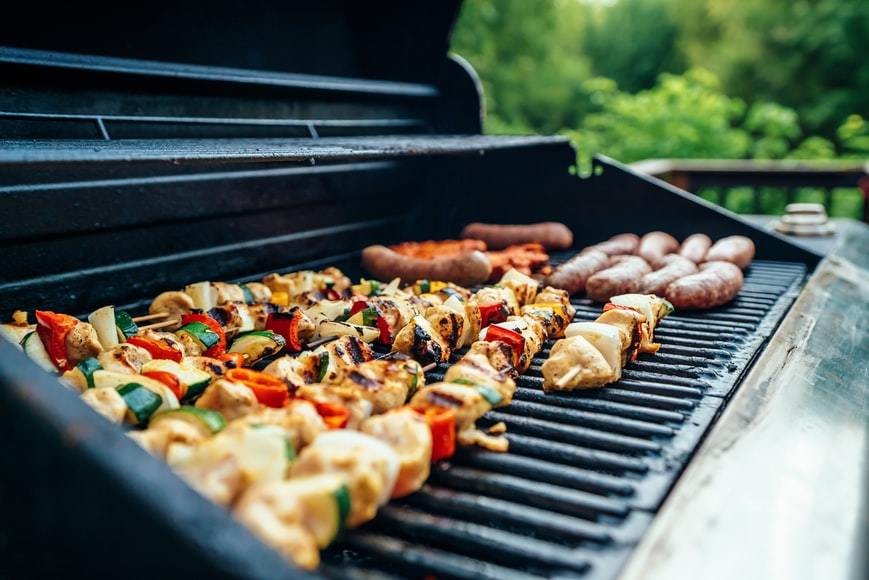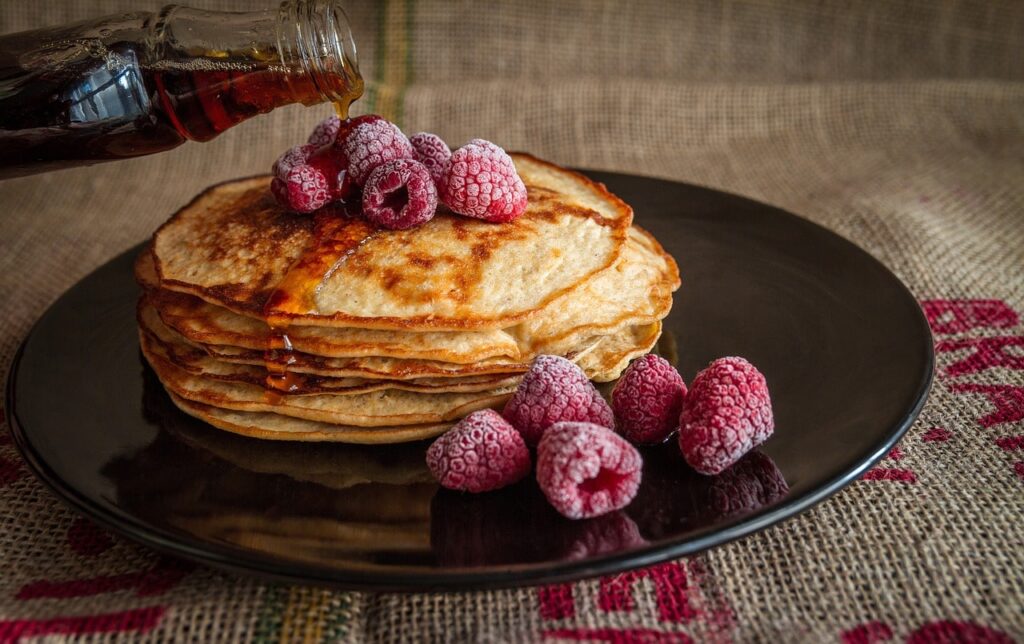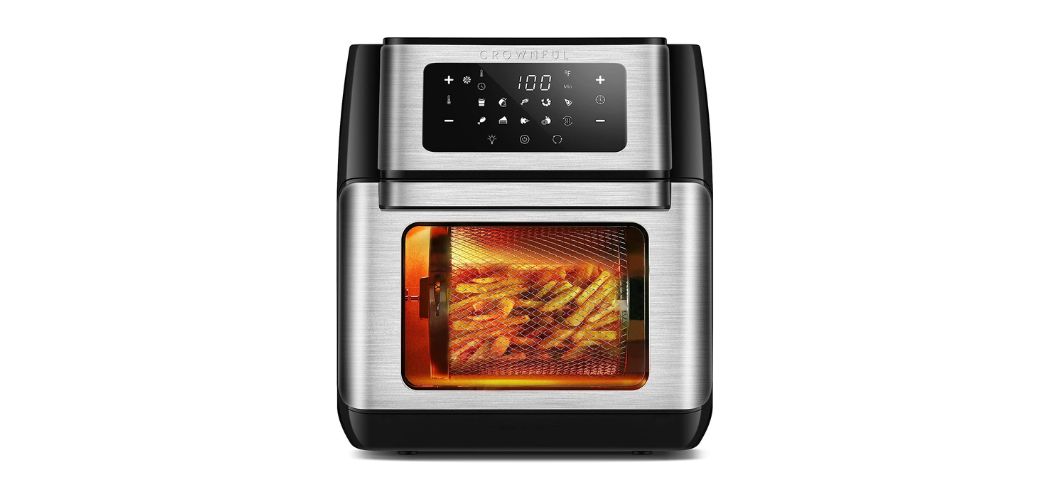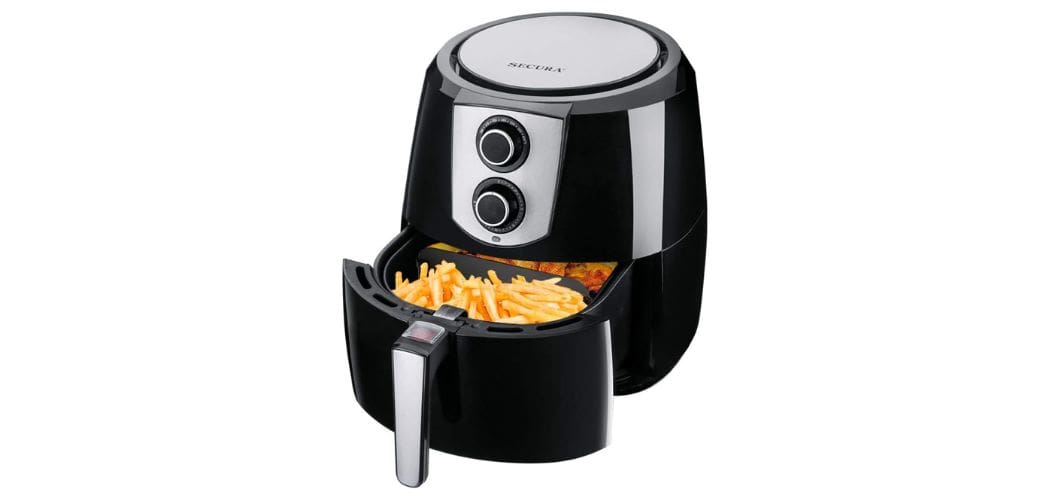If you are someone who loves barbeque and likes to cook a lot, then you might have come across two cooking appliances, namely, griddles and grills. They come in handy for grilling or fast cooking and are best at doing so.
People often consider them the same and even use them interchangeably for cooking various kinds of food items. In reality, these two are distinctly for specific purposes.
Planning to get one for your kitchen but wonder which suits you more? For that, you must know how these appliances differ and what exactly their uses are. Read on to find out the exact differences between a griddle and a grill.
Table of Contents
What Is A Griddle?
A griddle is a rectangular-shaped cooking appliance with a broad flat surface. Griddles are generally rectangular, but most hot plates are round.

The size varies depending on whether you will use it indoors or outdoors and whether it’s for personal or commercial cooking.
The metal cooking surface is heated from below, and the food cooks in its juices or in the oil poured on top of the griddle.
In electric griddles, the heat sources are electric components located on the surface.
Electric griddles may go on tabletops for convenient cooking and come with smoke-free options.
Griddles are more adaptable, and you can use them for cooking various foods.
You can use it for cooking bacon, sausages, pancakes, French toast, and eggs or even making grilled cheese sandwiches and quesadillas.
What Is A Grill?
The grill is another cooking appliance that comprises a metal cooking surface with raised ridges. The oils and fats separate out from the food through these ridges. When you place the food on top of the ridges, it receives direct heat.

Grills are of two types, first is a ridged solid iron or steel plate, while the second only has bars that directly hold the food over the flame.
Most barbecues use the open style. A continuous series of ridges on a solid grill distributes heat to the food during the oil and grease drain in between.
These ridges or bars leave brown or dark, delightful marks on the grilled food making the perfect barbeque meals.
Grill pans can be used to cook vegetables, meat, grilled sausages, chicken, and seafood.
The oil and fats drained down at the bottom of the pan sizzle and flavor the dish beautifully, leaving a delectable dish.
However, grills usually produce a good amount of heat and smoke. Hence you must use them with proper ventilation or strictly outdoors.
What Is The Difference | Griddle Vs. Grill?
Design
The majority of griddles are made of steel or cast iron. Stainless steel and even chromium are available, but they are usually expensive and ideal for commercial applications.
The steel used in griddles is milled flat with a thickness of either 3/4-inch or 1/4-inch. More thickness means more weight, but thicker steel is preferable for dense food items as it resists warping and retains heat.
Grill grates consist of nickel-plated steel, stainless steel, cast iron, porcelain-enameled cast iron, and porcelain-enameled steel, among other materials. The porcelain coating only helps with cleaning.
The thicker the metal, the better it retains heat and withstands warping. Steel and iron may rust, but they become nearly non-stick after breaking in.
Use
With griddles, you can cook breakfast foods such as pancakes, french toast, hash browns, and scrambled eggs on the flat griddles.

And since you can toast the buns at the same time, they’re also perfect for making hot sandwiches and burgers.
Grills are an important part of traditional cooking all across the world.
You can cook big chunks of meat, fish, poultry, sausages, and even entire vegetables like corn. You can also make kebabs and satays using skewers.
Anything that you grill becomes more flavorful, but you should apply a small amount of oil to avoid drying out.
Cooking Temperature
The cooking temperatures are one of the most significant distinctions between a griddle and a grill.
Grills usually cook at temperatures of at least 400 degrees Fahrenheit, i.e., 204 degrees Celsius or greater. For griddles, it is around 350 °F or 177 °C for optimum cooking.
Grills must be ideally used outside the house or under a commercial hood ventilation system since they produce a lot of smoke and heat, which might be inconvenient in closed spaces.
In this regard, griddles tend to be a little safer as the food isn’t in direct contact with the open flames, so there’s no risk of flare-ups or an uncomfortable amount of smoke.
Maintenance
Cleaning a flat griddle is a lot easier than cleaning a grill. The grill has a larger surface area with nooks and crevices where burned grease can collect.
Most grills may be cleaned with a stiff brush and soapy water. Warm water and a flat scraper are generally enough to clean griddles.
| Aspects | Grill | Griddle |
| Design | Metal cooking surface with raised ridges or open bars. | Broad flat surface. |
| Use | Ideal for grilling vegetables, meat, grilled sausages, chicken, seafood, etc. | One can cook bacon, sausages, pancakes, French toast, eggs, etc. |
| Cooking | Cooking at high temperatures on ridges or with bars on open flames. Grilled marks appear. | It provides a flat surface for even cooking and requires enough oil and grease. |
| Maintenance | Requires more effort in cleaning and maintenance. | Easy to clean. |
Which Is Better For You?
Griddles are ideal for smaller foods or runny foods, such as eggs, pancakes, etc. With a grill, you can cook fatty meats and poultry, even with the skin on. The grill lets the fat flow out, releasing a smoky and flavourful taste.

And since the food isn’t languishing in grease and oils as it would on a griddle, it’s a little healthier.
However, if you are not fond of outdoor cooking or installing a ventilation system, then you should instead go for a griddle as it provides a hassle-free cooking experience.
Not to forget, the maintenance is higher with grills compared to griddles as you need to clean a grill thoroughly.
Hence, if you are always in a hustle, then a griddle might be a little time-saving and a durable option.
In conclusion, picking one among both options completely depends on your requirements and conditions. Whatever fits into your criteria and is suitable for you as a helpful kitchen appliance, you must invest in that.
FAQs
Do I Have To Season My Griddle After Every Use?
There’s no need to clean with soap, brush, or dry after every use, and you only need to consider the seasoning. This creates a non-stick surface that keeps your food from sticking to the griddle. It all boils down to the use of oil for seasoning and proper storage after use.
How Often Should You Clean A Grill?
Grills require more maintenance compared to a griddle. Cleaning the grates, bars, and grease management system at least once a month is essential to maintaining the grill.
If your grill isn’t heating up as quickly as it used to and struggles to reach above 500 degrees Fahrenheit, then this might indicate the need for cleaning.
What Are The Average Costs Of A Grill And A Griddle?
You can buy a gas grill for under $100 USD, and it may even go up as high as $10,000. Charcoal grills may cost as low as $20 or as much as $2,000.
The price difference might be due to a variety of factors, but one of the most essential is durability.
Griddles can be as affordable as $30, and they can go up to $500. You should buy a high-quality appliance to have an optimum cooking experience.
Conclusion
Both grills and griddles are highly multifunctional appliances and save a lot of effort while cooking.
These kitchen appliances have specific purposes and come with their own set of pros and cons.
Now that you are aware of all the aspects related to these devices, as well as the basic differences that set them apart, you can finally make a smart investment accordingly.




